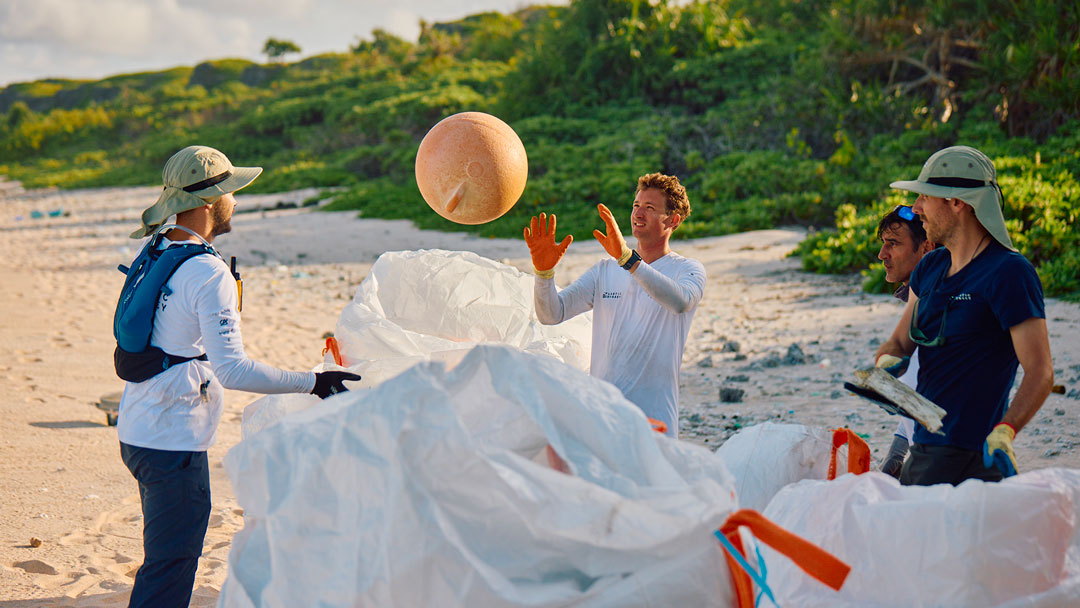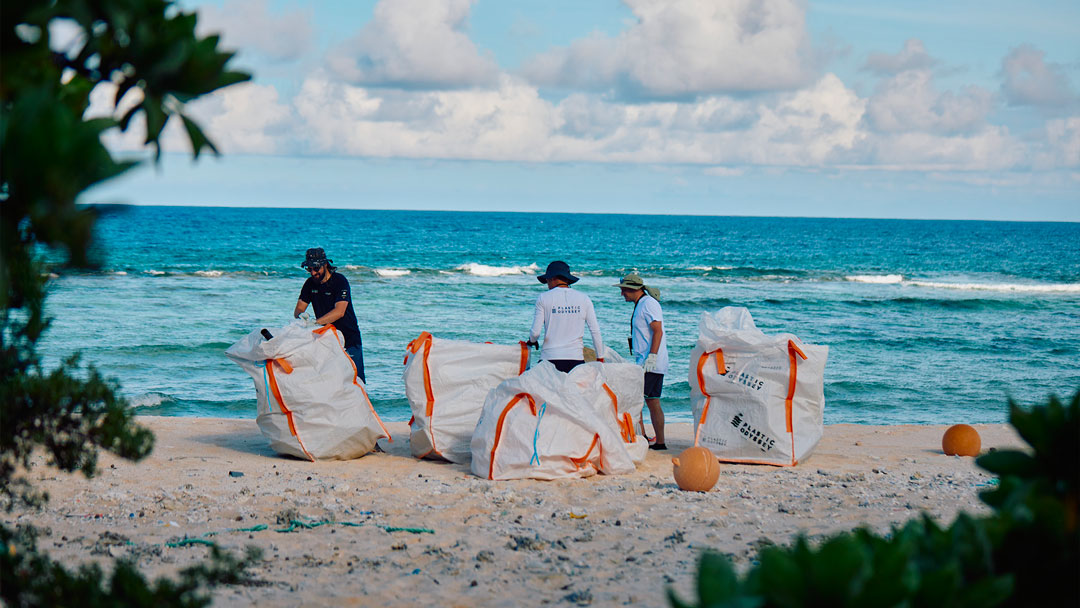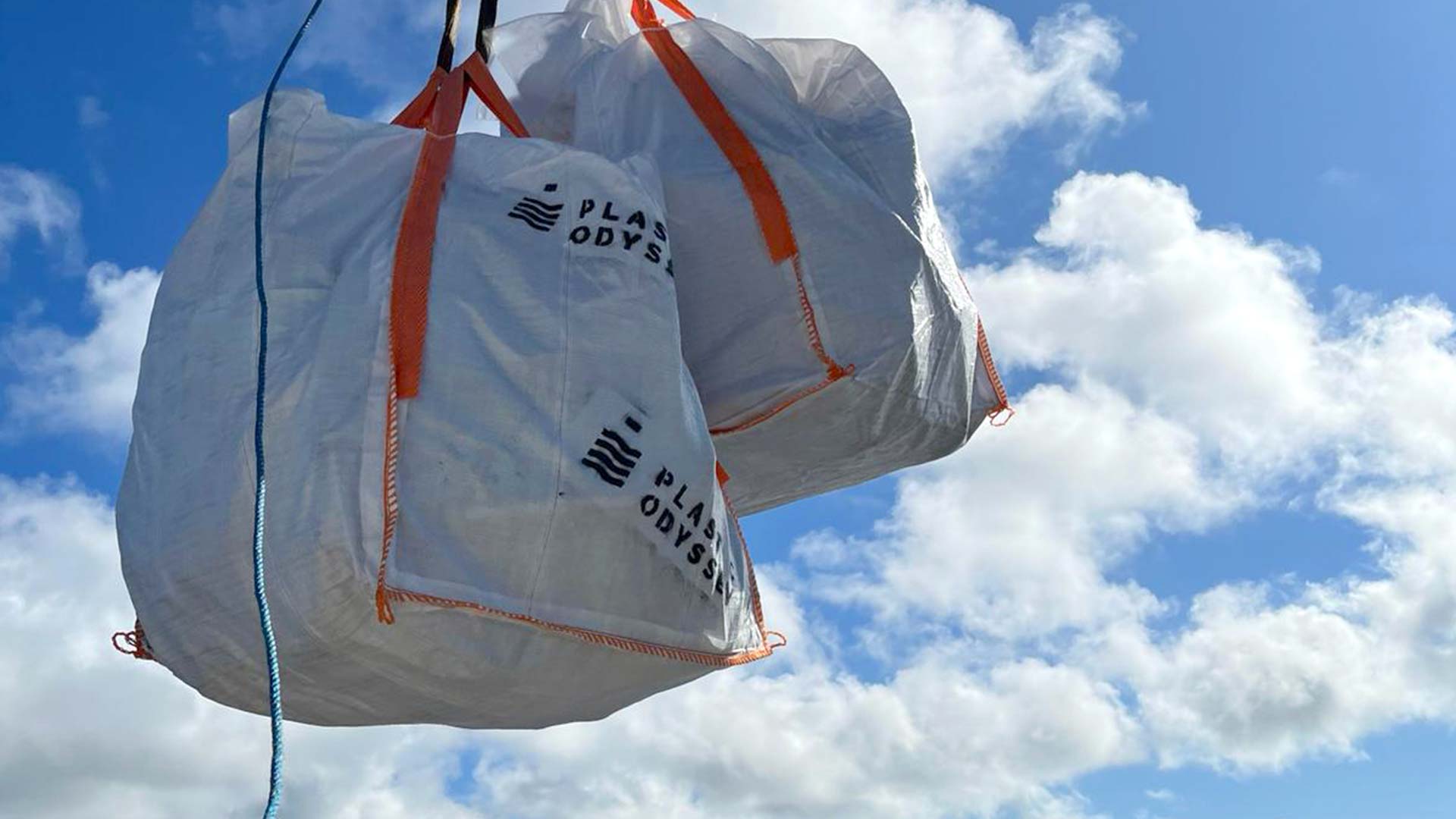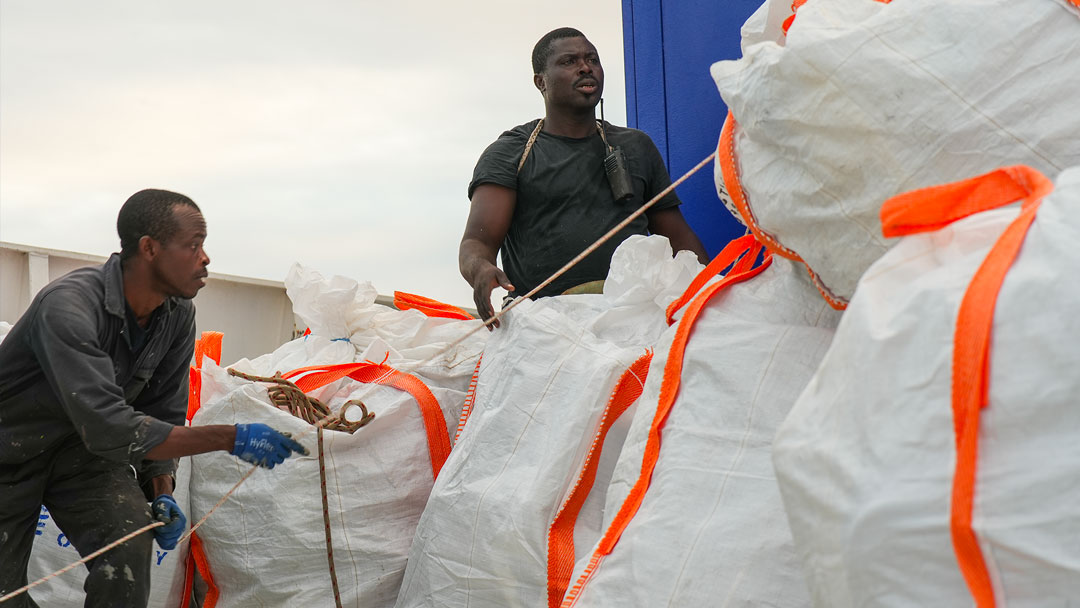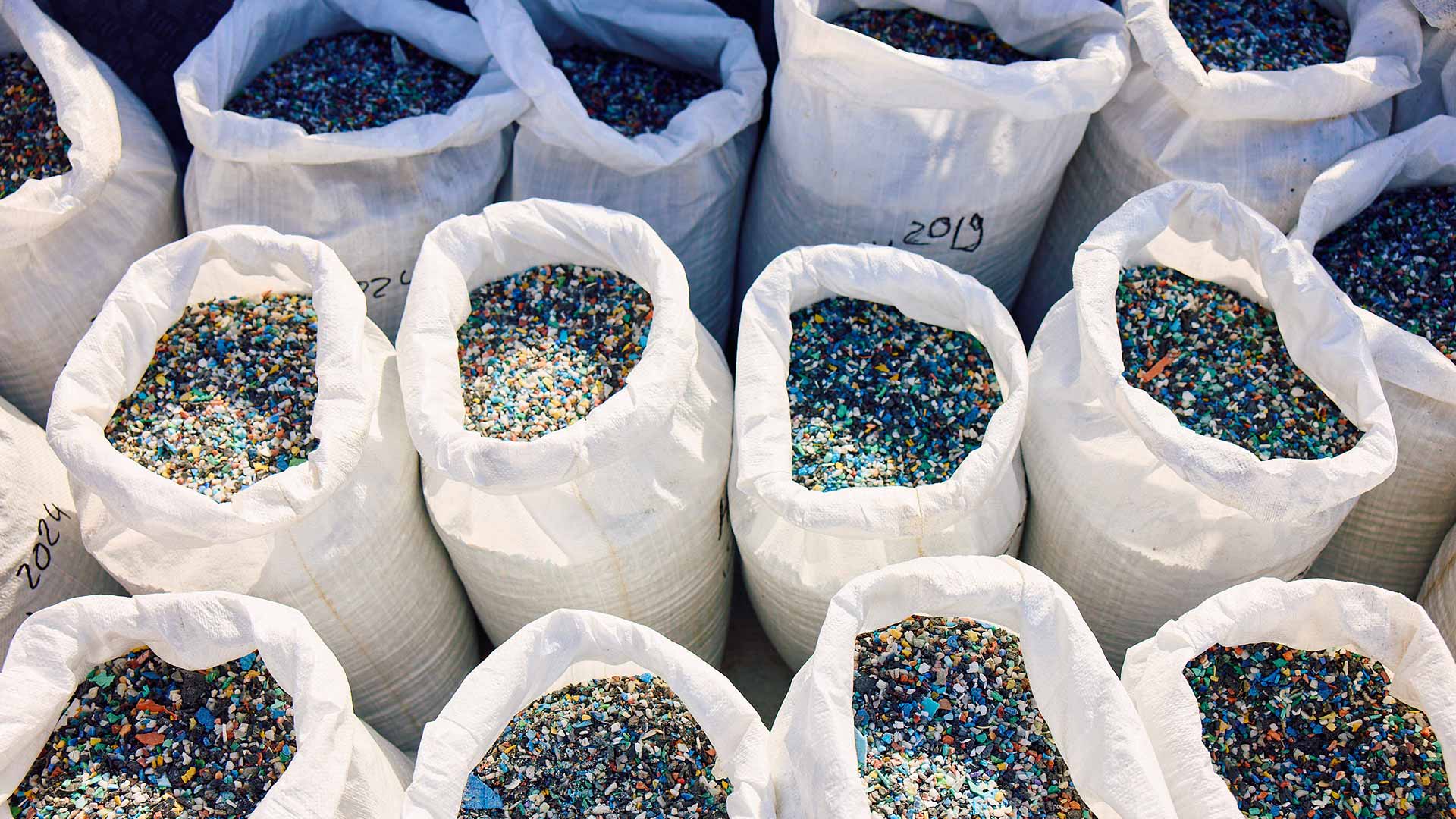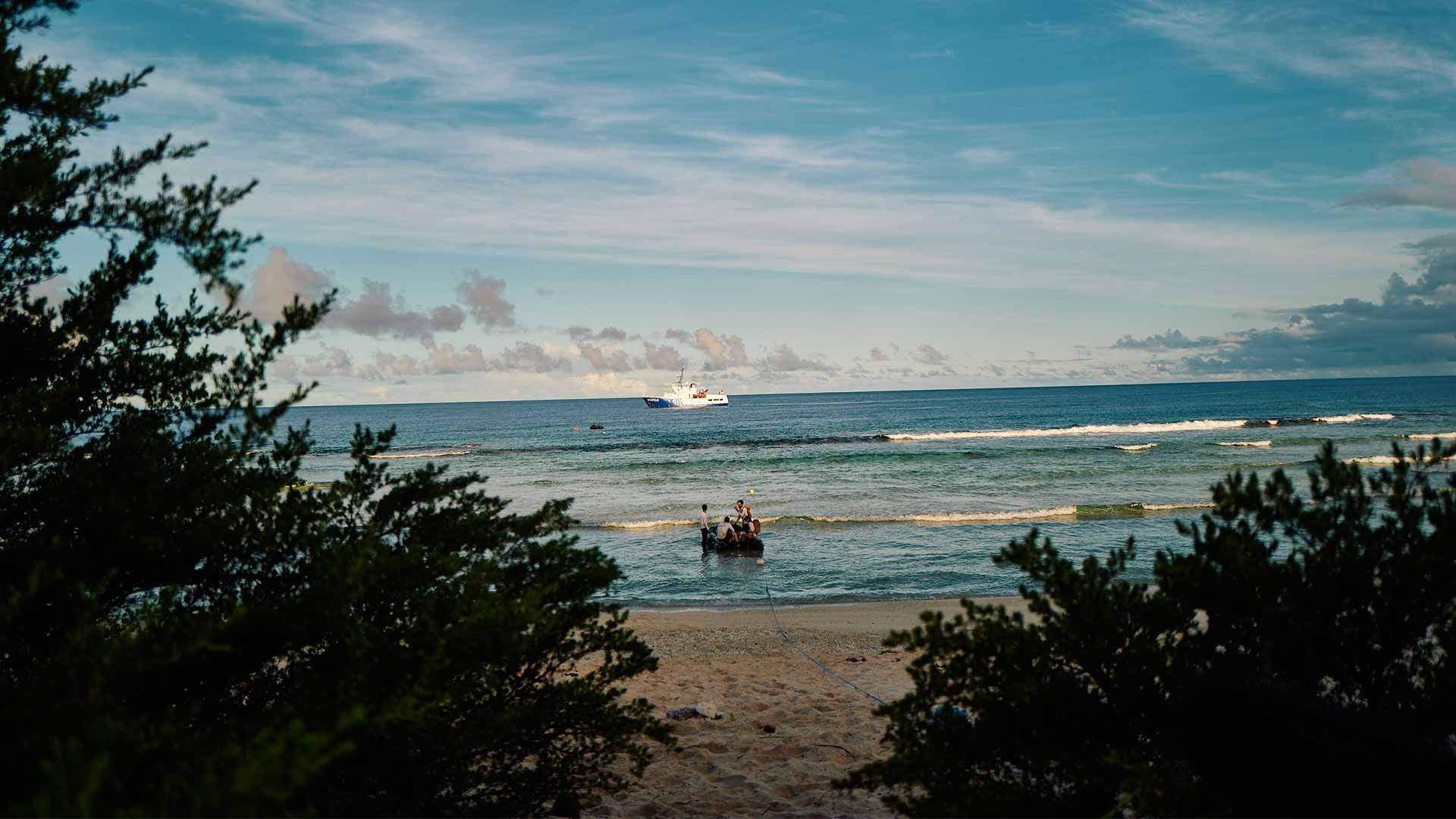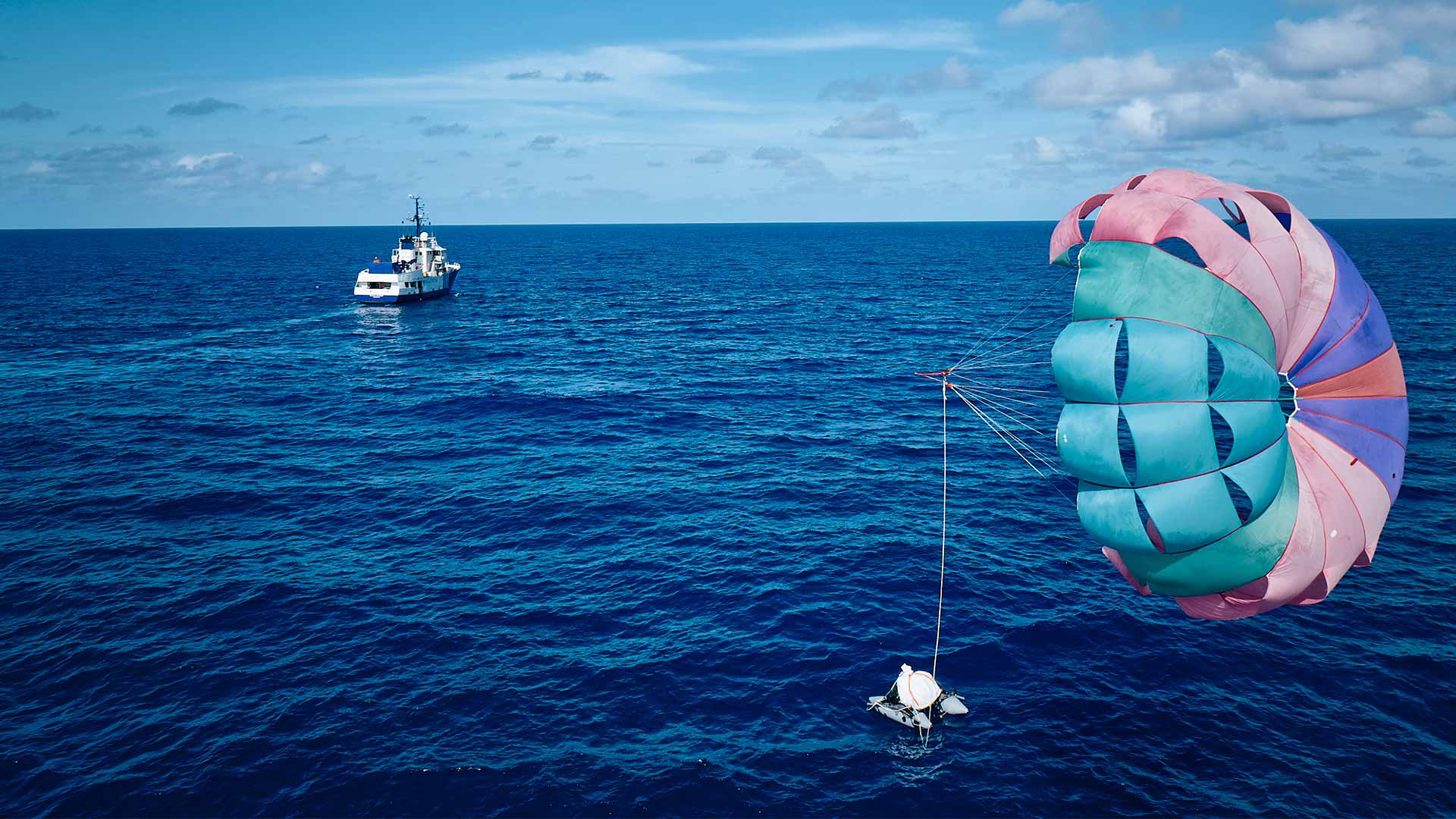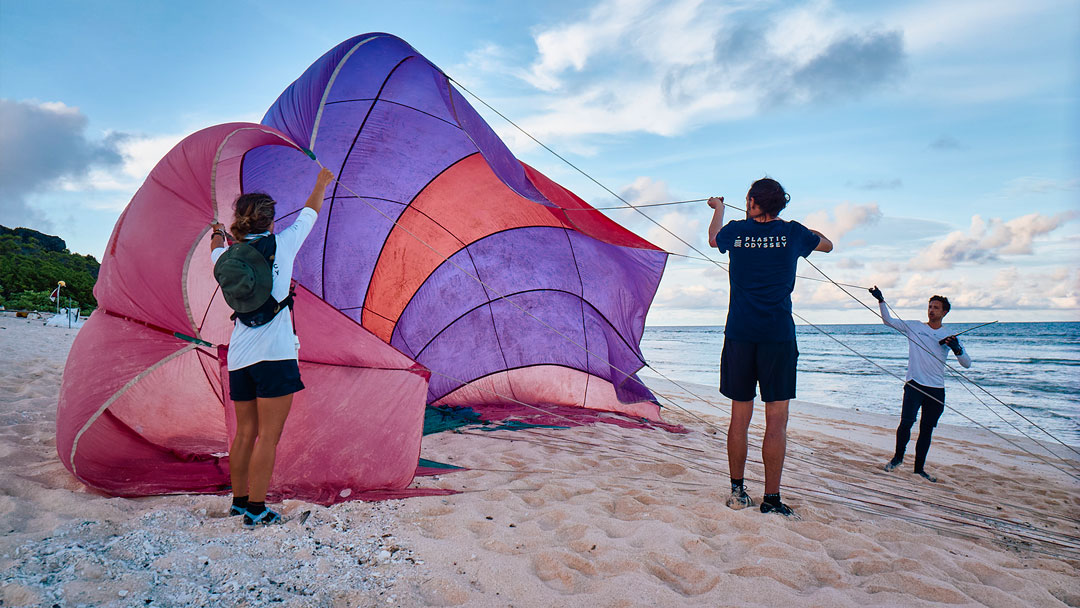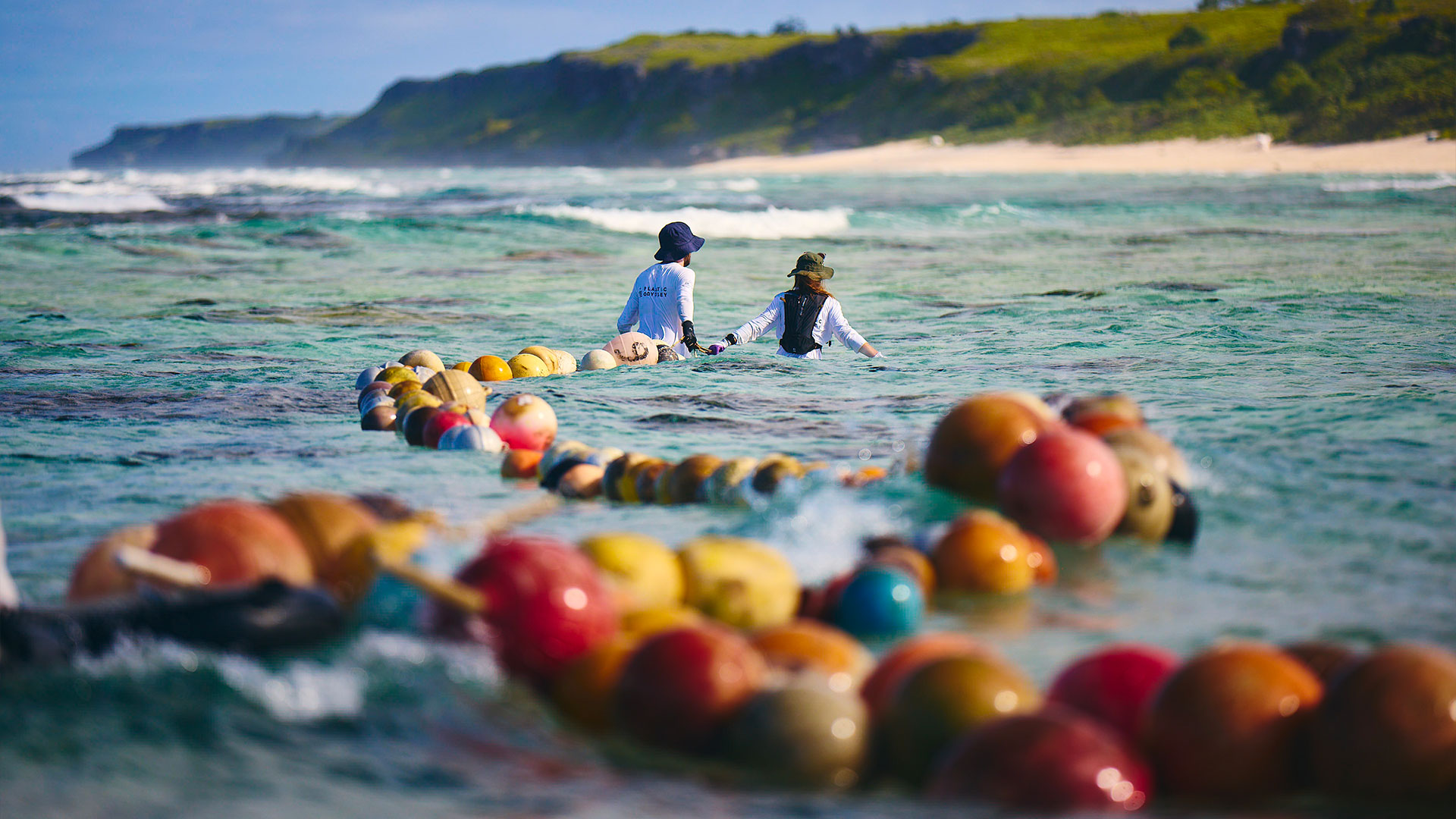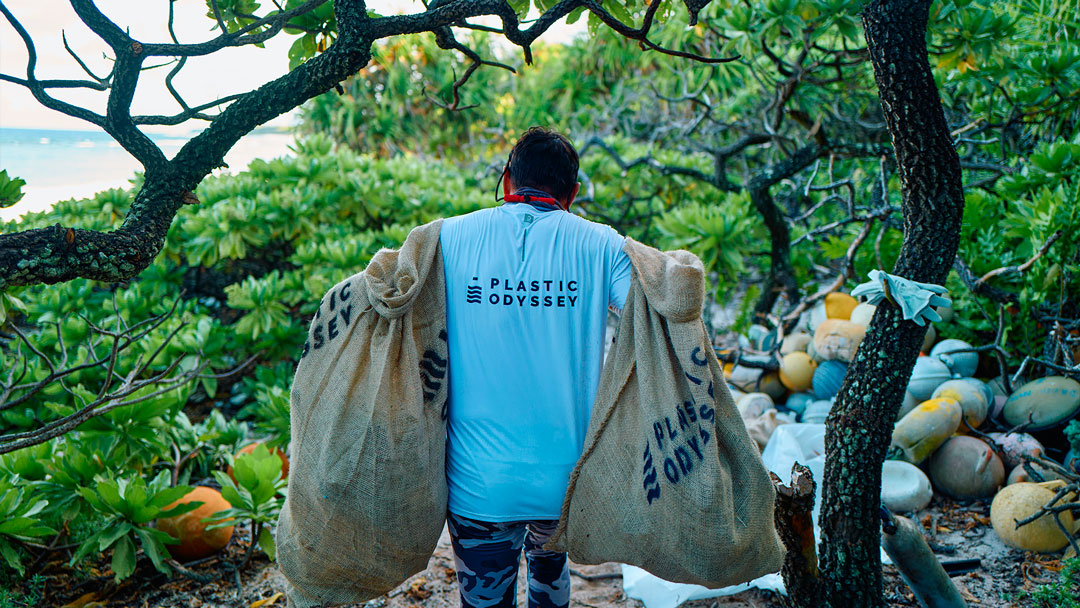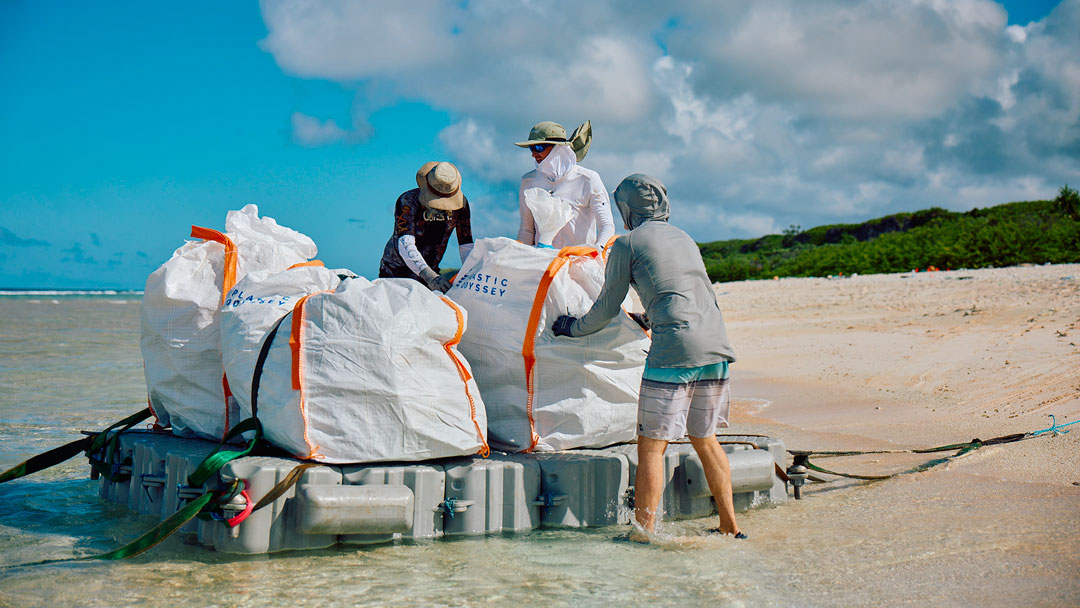
The sun has risen on the East beach of Henderson Island, where 12 of us have spent the first of our seven days on site. As quickly as possible, to escape the scorching sun, we spread out along the entire length of the beach and begin gathering the Big Bags.
Operation Rafts: Transporting Without Damaging the Coral Barrier
From the ship, which spent the night adrift in front of our camp, we receive the three rafts we crafted: two inflatable paddles connected by home-made recycled plastic profiles, a raft made of two Zodiac-type tubes assembled and secured by a net in the center, and a floating pontoon platform we obtained in Ecuador. With these equipment, Baptiste and Maxime, who prepared the recycling workshop to transform the waste on board, join us to lend a helping hand. We embark on a race against time, as the weather is currently favorable for a maritime landing of the waste. For this, we will use the rafts and the back-and-forth set up by Simon and Ludwig, the ‘local’ of the group. He has spent the last twenty years on the Pacific islands on the Polynesian side and knows better than anyone how to navigate a reef amidst the waves without crashing into the sharp coral.
The rafts are loaded with Big Bags, each weighing an average of 100 kg. They are so heavy that we struggle to roll them down towards the rafts. Once loaded, the makeshift barge can be towed by a single person despite the three Big Bags it supports. The process is tiring but works very well! We tackle the hundreds of buoys that were also left on the beach in 2019. The connecting links are replaced, and we tow dozens of meters of the string along the reef, taking great care to avoid the corals. The parrotfish, curious, come to get a close look at our commotion. If they have never seen a human before, we hope to leave them with a good memory by helping them reclaim the area without a trace of human pollution.

At noon, the lunch break allows us to set up the afternoon action plan: extract the waste gathered at the passage point in the reef marked with a buoy. The surf and the current are very powerful there, and the risk of capsizing is high. At 1 p.m., Simon, Ludwig, and Alexandre equip themselves with masks, snorkels, and fins to secure the transfer and prevent the line connecting the shore to the outside of the reef from getting stuck at the bottom and damaging the coral. We attempt the first maneuver with three bags loaded with waste. We tow the platform with the help of the Zodiac from the open sea, and after a few waves that keep us on alert, the loading is secured in the calm and deep zone of the shore. It’s a success! We high-five, shout with joy! The passage is inaugurated, and soon we start the back-and-forths. The downstream logistics are also long and complex: the Zodiac tows the platform to the Plastic Odyssey ship, which receives it and crane-lifts the Big Bags one by one onto the deck. We prioritize loading the hard plastic that we can recycle directly on board. The deck is soon covered! These wastes that haunted the island are now a precious resource for our workshop. They will come out of our ship in the form of boards, benches, and profiles that can be installed in nearby islands in need. These wastes have immeasurable value: they symbolize overflowing pollution that the ocean spits out on the most isolated beaches on the planet. They signify an overflow of our ecosystems by waste. But they also prove that solutions are possible: an ‘impossible cleanup’ made possible by the deployment of small-scale recycling solutions. Our ship is the demonstrator, and the technologies it uses deserve to be replicated worldwide. The content we are fortunate to create: videos, photos, written narratives, will, we hope, inspire a change in the mindset of many and reduce plastic consumption at its source.
We are moving fast and effectively. But after two days of relentless collection, we have so far only recovered the plastic collected in 2019. Since then, the beach has been covered with new waste: we are undertaking a counting protocol to measure the concentration and origin of these new items. These data will be very useful to feed into the research program we have planned with Hanna, a half-Dutch, half-American scientist specializing in plastics.
In the evening, we find our camp invaded by about fifty hermit crabs exploring our coconut bowls and wooden spoons, attempting to climb the suspended food nets. Marseille soap is a sensation: they tear open our waterproof bags to find it. At night, they come to monitor our sleep very closely, in dozens, waking us up with the discreet noise of the grass they traverse. On this paradise island, yet endangered, the climate is ideal at night: neither too hot nor too cold. No mosquitoes, no snakes, only rats that, for now, avoid us. Since our arrival and after the passage of the heavy depression that delayed our departure, we have not had any rain. All elements seem to align to assist us in the accomplishment of our titanic task. Tomorrow, we will continue to gather the tons of waste that invade the shore in Big Bags, and we will be able to start extracting the 100 meters of buoy garland that we have assembled!
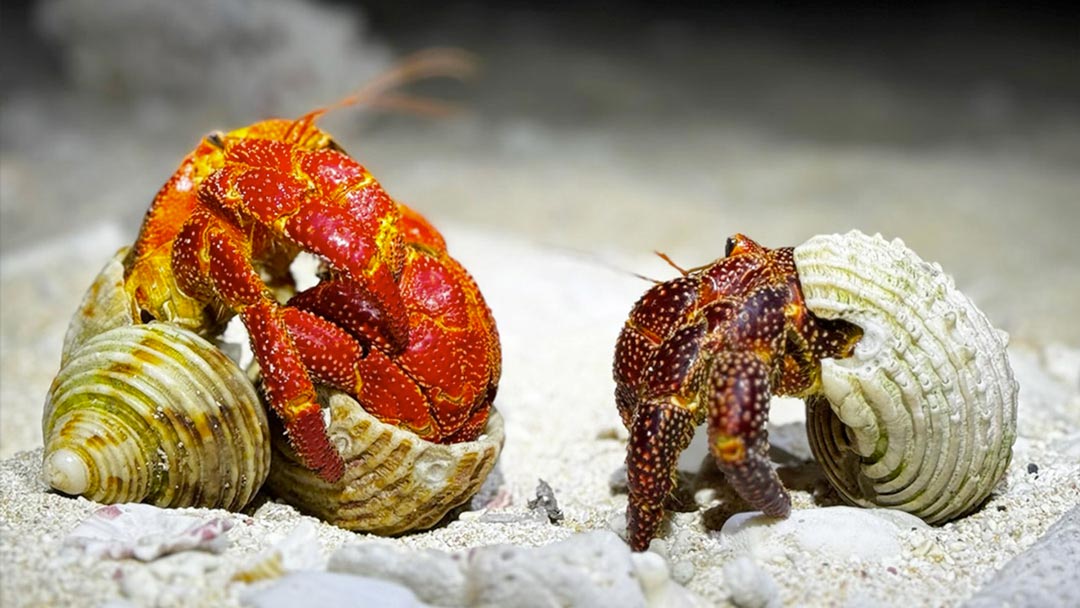
Other news
Days 9 & 10: Transformation of Plastic Waste
After spending a week on Henderson extracting tons of plastic waste polluting the island, we set sail as night falls. Heading towards Pitcairn Island....
Days 7 & 8: Last Days on Henderson
In the early hours of the morning, we traverse the long kilometer to the southern end of the beach, laden with water and empty Big Bags to commence the last waste collection....
Day 6: Crossing the Coral Reef by Air
Today is Sunday, and we're trying to mark the occasion by treating ourselves to a lie-in. A few hours of free time: some go for a run, others explore the extremities of the beach....
Day 5: First Parachute Trials
The usual rhythm takes shape: by 6 o'clock, most team members are already operational. This morning marks the beginning of the major collection!...
Day 4: Arrival of the Silver Supporter
If the Silver Supporter keeps its promise and joins us today, it could save us from a complex logistical problem by retrieving a significant portion of the heaviest bags....
Day 3: The cleanup is intensifying
Operational from 6 in the morning, we start working before the sun overwhelms us. By 7 o'clock, the temperature rises sharply and becomes almost unbearable....
Day 2: First Waste removal
The sun has risen on the East beach of Henderson Island, where 12 of us have spent the first of our seven days on site. As quickly as possible, to escape the scorching sun, we spread out along the entire length of the beach and begin gathering the Big Bags....
Day 1: Installation and launch of the cleaning operations
After a first night off the coast of Henderson Island, the Plastic Odyssey teams gather early to set foot on the East beach of the island. Today's missions: set up the camp, carry out surveys, and test the systems for transporting plastic waste packaged in Big Bags......
First steps on Henderson Island, covered in waste
On Monday, February 12, 2024, the Plastic Odyssey vessel and the expedition crew arrived off the coast of Henderson Island. Circling the island from its southern side and taking advantage of favorable navigation conditions....
